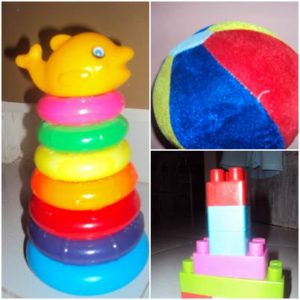 Honestly speaking, I do not know about sensory processing disorder until I discovered that my son has it. My son is delayed in motor skills and I thought he will be able to catch up soon since he born prematurely. Until we notice that there is something wrong so we decided to bring him to Developmental pediatrician. The doctor diagnosis is Global Development Delay and required to attend occupational and speech therapy sessions.
Honestly speaking, I do not know about sensory processing disorder until I discovered that my son has it. My son is delayed in motor skills and I thought he will be able to catch up soon since he born prematurely. Until we notice that there is something wrong so we decided to bring him to Developmental pediatrician. The doctor diagnosis is Global Development Delay and required to attend occupational and speech therapy sessions.
So I want to share common signs of Sensory Processing Disorder:
1. Being clumsy.
Different reasons that a child may fall or bump into objects more than other children maybe because the child proprioception and vestibular system are not working too well.
2. Prevents parties
A child that avoid parties or public place may he/she is overstimulated by the noise, lights or people accidentally touching them. A child with sensory processing disorder, a party can be a torture as the sounds, sights and unexpected touches can just be painful to him.
3. Repeatedly walking on toes
A child who frequently walking on toes are sensitive to sensations and they prefer as little of their foot to be touching the surface. Some reason includes they like the pressure it puts on their ankle or the vestibular system is not processing properly.
4. Chooses tight clothing
Tight clothing may give a child more proprioceptive input and the sensations they receive is calming to them and help them to focus more.
5. Tough Child
A child seems to bounce off the walls but a child who is always be jumping, running, and pushing are seeking proprioceptive input and vestibular as well. This child may describe bad child but really they are just trying to get their needs met.
6. Very fascinating at bright and fast paced TV shows.
A lot of children love to watch fast paced and bright TV shows but if a child only wants to watch fast and bright shows then it can be a sign that they want more visual stimulation. A child that is seeking visual stimulation, your child likes to look at lights and brightly colored and high contrast books.
7. Restricting at the sight, taste and smell of foods
Restricting immediately if confronted with foods is often because the oral system is being overwhelmed.
8. Prevents movements.
A child that scared at climbing playground equipment, riding a swing and they are avoiding vestibular and proprioceptive input.
